Best Credit Cards for Utility and Bill Payments
About Megan
Megan Brame is a five-time award-winning content strategist whose content centers around helping others develop a better understanding of finance and marketing. Her website is https://bramecreative.com
Read full bio
At a Glance
So many utility and bill payment companies are built on clunky, outdated systems that only offer ACH as a digital payment method, making many of us wonder why they even have a website. If you’re lucky enough to deal with a utility or bill company that offers credit card payments as an option, you may be able to get some serious rewards for the spending you already planned to do.
In this article, you’ll learn:
Comparing the best credit cards to pay for utilities and bills
| Credit Card |
Reward Rate |
Welcome Offer |
|---|---|---|
U.S. Bank Cash+™ Visa Signature® Card |
5% cash back on two categories | $200 bonus after spending $500 in the first 3 months |
Chase Freedom Flex℠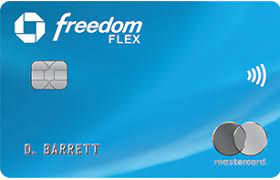 |
5% cash back on rotating categories | $200 bonus after spending $500 in the first 3 months |
Ink Business Cash® Credit Card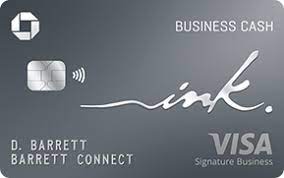 |
5% cash back on office supplies, internet, cable, and phone services | $750 bonus after spending $7,500 in the first 3 months |
Blue Cash Preferred® Card from American Express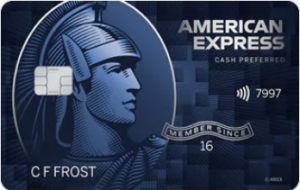 |
6% cash back on U.S. supermarkets (up to $6,000 per year, then 1%), 6% cash back on select U.S. streaming services, 3% cash back on U.S. gas stations and eligible transit, 1% cash back on other purchases | $250 statement credit after spending $3,000 in the first 6 months |
Ink Business Preferred® Credit Card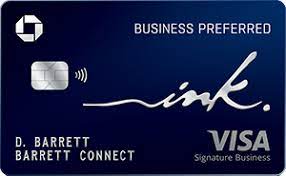 |
3X points on travel, shipping purchases, internet, cable and phone services, advertising purchases with social media sites and search engines (up to $150,000 per year), 1X points on all other purchases | 100k bonus points after spending $15,000 in the first 3 months |
Citi® Double Cash Card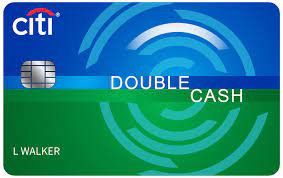 |
2% cash back on all purchases | N/A |
Wells Fargo Active Cash® Card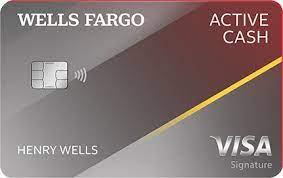 |
2% cash back on all purchases | $200 cash rewards |
A closer look at the best credit cards for making utility and bill payments.
U.S. Bank Cash+™ Visa Signature® Card

For the Everyday Spender
Reward Rate:
5%
Reward Details:
Earn 5% cash back on two categories of your choice, up to $2,000 in combined eligible purchases each quarter. Also, earn 5% cash back on prepaid air, hotel, and car reservations booked directly in the Rewards Center. Earn 2% cash back on one everyday category (such as gas stations/EV charging stations, grocery stores, or restaurants) and 1% cash back on all other eligible purchases.
Card Summary
Signup bonus:
Earn a $200 bonus after spending $1,000 on eligible purchases within the first 120 days of account opening.
Our verdict
With the ability to choose your cash back bonus categories and generous intro offer, this card is a workhorse for everyday spending on things like utilities, groceries, and travel.
Annual Fee: $0
Regular APR: Enjoy a 0% intro APR on balance transfers for 15 billing cycles. After that, the APR is 19.49% – 29.49% (Variable).
Recommended
Credit Score: Good/Excellent
Also, get actionable insights to work on your creditworthiness and improve your chances of approval for this card.get started.
Pros and Cons
- Pick two extra 5% bonus cash back quarterly categories
- 5% cash back on airlines, hotels, and car reservations booked in the Rewards Center
- 2% cash back on one everyday category
- 1% cash back on all other purchases
- No annual fee
- Remembering to update your quarterly categories can get tedious
- $2,000 quarterly cap on cash back
Chase Freedom Flex℠

For the Always on the Road
Reward Rate:
1% to 5%
Reward Details:
Earn 5% cash back on rotating quarterly categories, up to $1,500 in combined purchases each quarter. Also, earn 5% cash back on travel booked through the Chase Ultimate Rewards portal. Earn 3% cash back on dining and drugstore purchases, and 1% cash back on all other purchases.
Card Summary
Signup bonus:
Earn a $200 bonus after spending $500 on purchases within the first 3 months of account opening.
Our verdict
The cell phone reimbursement perk is rarely seen on a $0 annual fee card. With the rotating bonus categories, you’ll be able to regularly maximize your point-earning potential.
Annual Fee: $0
Regular APR: 14.99% – 23.74% variable
Recommended
Credit Score: Good/Excellent
Also, get actionable insights to work on your creditworthiness and improve your chances of approval for this card.get started.
Pros and Cons
- $0 annual fee
- 5% cash back on rotating quarterly categories
- Automatic 1% cash back on all purchases
- Cell phone protection program
- Quarterly bonus categories must be activated
- $1,500 quarterly cash back cap
Ink Business Cash® Credit Card

For the Digital Junkie
Reward Rate:
1% -5%
Reward Details:
5% cash back on the first $25,000 spent in combined purchases at office supply stores and on internet, cable, and phone services each account anniversary year. Also, earn 2% cash back on the first $25,000 spent in combined purchases at gas stations and restaurants each account anniversary year. Earn 1% cash back on all other purchases.
Card Summary
Signup bonus:
Earn $750 bonus cash back after you spend $6,000 on purchases within the first 3 months from account opening.
Our verdict
For small business owners looking to get their first company card, the Ink Business Cash card can’t be beat. The free employee cards, and an impressive $25,000 spending cap this card is a great way to get rewarded for your everyday business spend.
Annual Fee:$0
Regular APR: 13.24% – 19.24% variable
Recommended
Credit Score: Good/Excellent
Also, get actionable insights to work on your creditworthiness and improve your chances of approval for this card.get started.
Pros and Cons
- $0 annual fee
- Free employee cards
- 5% cash back for cable, internet, phone, and office supply purchases
- 2% cash back on the first $25,000 spent at gas stations and restaurants
- $25,000 yearly cap is easy to hit for busy business accounts
Blue Cash Preferred® Card from American Express

For the Flexible Spender
Reward Rate:
1% – 6%
Reward Details:
Earn 6% cash back at U.S. supermarkets (on up to $6,000 per year, then 1%) and on select U.S. streaming services, 3% cash back at U.S. gas stations and on eligible transit, and 1% cash back on other eligible purchases.
Card Summary
Signup bonus:
Earn a $250 statement credit after spending $3,000 on purchases within the first 6 months.
Our verdict
If you’re interested in getting into the American Express ecosystem this card is perfect. With their top-tier customer support and generous rewards for everyday spending categories like groceries and streaming services, this card has it all.
Annual Fee:$0 intro annual fee for the first year, $95 per year thereafter
Regular APR: 0% intro APR on purchases for 12 months, then 18.99% – 29.99% variable
Recommended
Credit Score: Good/Excellent
Also, get actionable insights to work on your creditworthiness and improve your chances of approval for this card.get started.
Pros and Cons
- 6% cash back at grocery stores and streaming services
- 3% cash back at gas stations and transit services
- 1% cash back on all other purchases
- $95 annual fee after first year
- $6,000 per year cap on cash back for groceries
Ink Business Preferred® Credit Card

For the Digital Junkie
Reward Rate:
1X-3X
Reward Details:
Earn 3X points on the first $150,000 spent in combined purchases on travel, shipping purchases, internet, cable, and phone services, as well as advertising purchases made with social media sites and search engines each account anniversary year. Earn 1X points per $1 on all other purchases.
Card Summary
Signup bonus:
Earn 100,000 bonus points after you spend $15,000 on purchases in the first 3 months from account opening.
Our verdict
For business owners looking to accrue points instead of cash back, the Ink Business Preferred is one of the most popular cards around. Not only do you get 3x Ultimate Reward Points for utility payments, but access to discounted travel via the Ultimate Rewards Portal makes this a powerful card that can accrue points quickly.
Annual Fee: $95
Regular APR: 18.99% – 25.99% variable
Recommended
Credit Score: Excellent
Also, get actionable insights to work on your creditworthiness and improve your chances of approval for this card.get started.
Pros and Cons
- Company-wide cell phone protection
- $10,000 purchase protection for 120 days
- 3x points on cable, internet, shipping, and cell phone purchases
- 25% point value bonus for travel booked in the Ultimate Rewards Portal
- $95 annual fee
Citi® Double Cash Card

For the Everyday Spender
Reward Rate:
1%-2%
Reward Details:
Earn up to 2% cash back on all purchases – 1% when you make the purchase and an additional 1% as you pay off your purchases.
Card Summary
Signup bonus:
NA
Our verdict
If you’re looking for a card that you don’t need to think about, this is it. With no restrictions on spending categories and $0 annual fee, this is the card to keep in your wallet for everyday spending.
Annual Fee:$0
Regular APR: 13.99% – 23.99% variable
Recommended
Credit Score: Good/Excellent
Also, get actionable insights to work on your creditworthiness and improve your chances of approval for this card.get started.
Pros and Cons
- No annual fee
- 2% cash back on all purchases with no category restrictions
- Foreign transaction fees
- Rewards expire if the card is inactive for 12 months
Wells Fargo Active Cash® Card

For the Flexible Spender
Reward Rate:
2%
Reward Details:
Earn 2% cash back on all purchases.
Card Summary
Signup bonus:
Earn a $200 cash rewards bonus after spending $500 in purchases within the first 3 months.
Our verdict
Another great card for all-around spending, the Active Cash Card has no restrictions on spending categories and no spending caps.
Annual Fee:$0
Regular APR: 19.99% – 29.99% variable
Recommended
Credit Score: Good/Excellent
Also, get actionable insights to work on your creditworthiness and improve your chances of approval for this card.get started.
Pros and Cons
- $0 annual fee
- No spending category restrictions
- 0% introductory APR
- High-interest rate after introductory period ends
- No bonus earning potential
How to choose the best credit card for paying bills?
When choosing the best credit card for paying bills, there are several factors to consider. Here is a methodology to help you make an informed decision:
1. Determine your spending habits: Take a close look at your monthly bills and identify the categories in which you spend the most. This could include utilities, groceries, transportation, or other recurring expenses.
2. Evaluate rewards structure: Look for a credit card that offers rewards or cash back in the categories where you spend the most. For example, if you have high utility bills, a card that offers bonus cash back on utility payments would be beneficial. Consider whether you prefer a card with a flat-rate cash back on all purchases or one with bonus categories that align with your spending habits.
3. Introductory APR offers: If you anticipate carrying a balance or need some time to pay off a large bill, consider a credit card with a 0% introductory APR offer on purchases or balance transfers. This feature can help you save on interest charges and provide flexibility in managing your bills.
4. Annual fees: Consider whether the credit card charges an annual fee. If you’re looking for a card specifically for bill payments, you may prefer one with no annual fee to maximize your savings.
5. Sign-up bonus: Some credit cards offer sign-up bonuses, typically in the form of cash back or rewards points, after meeting certain spending requirements within a specific time frame. If you have substantial bills coming up or anticipate higher spending, a card with a lucrative sign-up bonus could be advantageous.
6. Additional perks and benefits: Consider any additional benefits offered by the credit card, such as travel insurance, purchase protection, or access to exclusive events. While not directly related to bill payments, these perks can enhance the overall value of the card.
7. Creditworthiness and eligibility: Check the credit requirements for the card and assess whether you meet the criteria. Keep in mind that the best credit card offers are typically available to those with good to excellent credit scores.
8. Compare and choose: Once you have identified your priorities and evaluated different credit card options based on the factors mentioned above, compare the benefits, fees, and terms of the cards to make an informed decision. Select the card that aligns with your spending habits and financial goals.
Remember, it’s essential to use credit cards responsibly by paying your bills on time and in full to avoid interest charges and debt accumulation.
Additional tips on saving money while paying utility bills.
Here are some additional tips to save money while paying utility bills:
1. Energy-efficient appliances: Invest in energy-efficient appliances that carry the Energy Star label. These appliances consume less energy, helping you reduce your electricity bills in the long run.
2. Unplug unused electronics: Many electronics consume energy even when they’re not in use. Unplug devices like chargers, TVs, and gaming consoles when they’re not being used to avoid unnecessary energy consumption.
3. Set energy-saving preferences: Adjust the settings on your appliances and electronics to energy-saving modes. For example, set your computer and monitor to sleep mode when not in use, and adjust your thermostat to an energy-efficient temperature.
4. Use natural light: Open curtains and blinds during the day to utilize natural light instead of relying solely on artificial lighting. This can help reduce your electricity usage during daylight hours.
5. Turn off lights: Develop a habit of turning off lights when leaving a room. Encourage family members to do the same, as this simple practice can significantly reduce electricity consumption.
6. Optimize water usage: Be mindful of water consumption by taking shorter showers, fixing leaks promptly, and using efficient water fixtures. Installing low-flow showerheads and faucet aerators can also help reduce water wastage.
7. Compare utility providers: Regularly compare utility providers to ensure you’re getting the best rates and service. Look for providers that offer competitive pricing and favorable terms.
8. Consider budget billing: Some utility companies offer budget billing, which allows you to spread out your annual energy costs evenly throughout the year. This can help you manage your budget by avoiding seasonal fluctuations in utility bills.
9. Conduct energy audits: Consider conducting a home energy audit to identify areas where energy efficiency can be improved. Many utility companies offer free or discounted energy audits that can help you pinpoint ways to save on energy bills.
10. Seek Government rebates and incentives: Research government programs, rebates, and incentives related to energy efficiency. You may be eligible for tax credits or rebates for installing energy-saving upgrades in your home, such as insulation or solar panels.
By implementing these tips, you can make a significant impact on reducing your utility bills and saving money over time.
Methodology
The methodology used to evaluate the credit cards mentioned above for paying bills involves considering key factors such as rewards rate, annual fee, introductory APR, regular APR, and signup bonus. Here is a breakdown of the methodology:
1. Rewards rate: The rewards rate indicates the percentage of cash back or rewards points you can earn on your bill payments. Higher rewards rates are generally more favorable, especially if they align with your spending patterns. Cards with bonus categories or flat-rate cash back options were evaluated to determine their rewards potential.
2. Annual fee: The annual fee is an important consideration, as it directly affects the overall value of the card. Cards with no annual fee or a low fee were given preference, as they allow for maximizing savings and rewards.
3. Intro APR: The introductory APR period on purchases and balance transfers is significant for those who anticipate carrying a balance or need time to pay off bills. Cards with longer 0% intro APR periods were considered advantageous for bill payments.
4. Regular APR: The regular APR comes into play once the introductory period ends. A lower regular APR is more favorable, especially if you anticipate carrying a balance or need flexibility in managing your bills.
5. Signup Bonus: The signup bonus provides an additional incentive for choosing a particular credit card. Cards with generous signup bonuses, such as cash back or rewards points, were given extra consideration, as they can provide immediate value.
6. Additional details: Other details such as foreign transaction fees, rewards redemption options, creditworthiness requirements, and customer benefits were also considered to provide a comprehensive evaluation of each card.
By considering these factors and evaluating how well each credit card aligns with bill payment needs, it becomes easier to identify the best option for paying bills based on individual preferences and spending habits.
The product information provided here is based on research conducted up to a specific date and may have changed. For the latest and most accurate information, we recommend you to visit the respective card’s website before proceeding.









